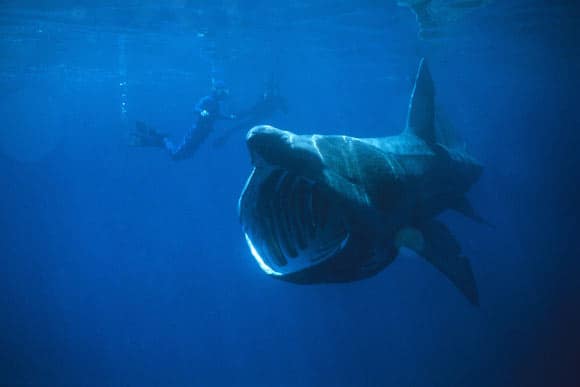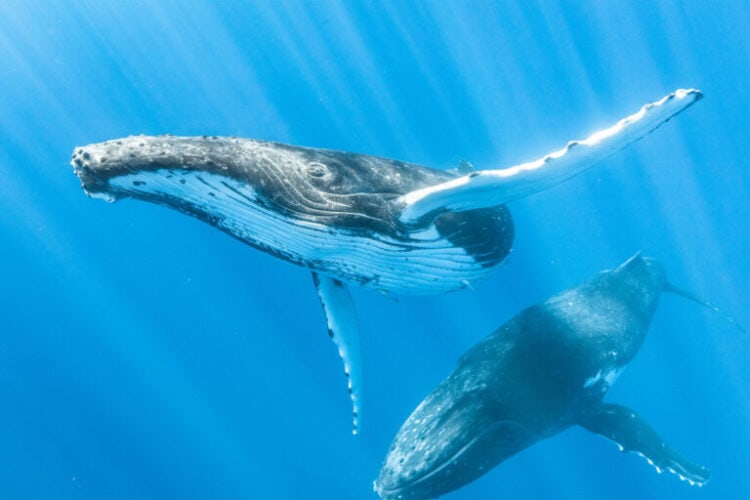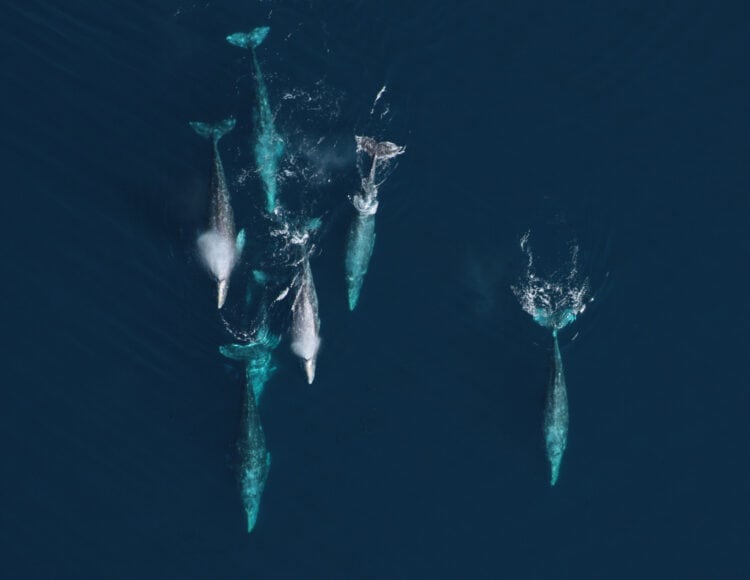Otodus megalodon was a gigantic megatooth shark that lived in the world’s oceans from 23 to 3.6 million years ago. It could grow to the enormous size of at least 15 m long, making it one of the largest apex marine predators since the Mesozoic.
In new research, paleontologists tested hypotheses relating to Otodus megalodon’s extinction by providing quantitative estimates of its body temperature. They found that thereby constraining its thermal physiology had body temperatures significantly elevated compared to other sharks, consistent with it having a degree of internal heat production as modern warm-blooded animals do.
Sharks are a group of cartilaginous fishes with a nearly 200-million-year geologic history.
The fossil record shows that numerous shark species appeared and disappeared through geologic time where many groups even survived through the end-Cretaceous mass extinction.
Today, there are over 500 species of sharks found in nearly every marine habitat, including the coastal epipelagic zone to below 1,000 m of depth in the abyssopelagic zone.
They play crucial roles in marine ecosystems as meso- and apex predators as well as potential food sources for older individuals or larger species.
The ability to regulate body temperature is evolutionarily profound because it is thought to have also acted as a key driver for the evolution of gigantism in predatory sharks.
In fact, Otodus megalodon — primarily known only from its gigantic teeth in the Late Neogene fossil record — is inferred to have been warm-blooded, or more precisely regionally endothermic, based on multiple lines of evidence.
“However, those findings were based on pure inference,” said William Paterson University’s Professor Michael Griffiths and colleagues.
“Our study provides the first empirical evidence of warm-bloodedness in the extinct shark.”
The researchers used a novel geochemical technique, involving clumped isotope thermometry and phosphate oxygen isotope thermometry, to test the megalodon endothermy hypothesis.
“Studies using these methods have shown them to be particularly useful in inferring the thermo-physiologies of fossil vertebrates of ‘unknown’ metabolic origins by comparing their body temperature with that of co-occurring fossils of ‘known’ metabolisms,” Professor Griffiths said.
Clumped isotope thermometry is based on the thermodynamic preference for two or more ‘heavier’ isotopes of a particular element, such as carbon-13 and oxygen-18, to form bonds in a mineral lattice based on the mineralization temperatures.
The degree to which these isotopes bond or ‘clump’ together can then reveal the temperature at which the mineral formed.
Phosphate oxygen isotope thermometry is based on the principle that the ratio of the stable oxygen isotopes, oxygen-18 and oxygen-16, in phosphate minerals depends on the temperature of the body water from which they formed.
The study authors found that Otodus megalodon had body temperatures significantly higher than sharks considered cold-blooded or ectothermic, consistent with the fossil shark having a degree of internal heat production as modern warm-blooded animals do.
Among the modern-day sharks with regional endothermy is a group that includes mako and great white sharks with the previously reported average body temperature ranging from 22.0 to 26.6 degrees Celsius, which may be 10 to 21 degrees Celsius higher than ambient ocean temperature.
The study suggests Otodus megalodon had an overall average body temperature of about 27 degrees Celsius.
“Because Otodus megalodon went extinct around the time of extreme changes in climate and sea-level, which impacted the distribution of and the type of prey, our new study sheds light on the vulnerability of large marine apex predators, such as the great white shark, to stressors such as climate change,” Dr. Griffiths said.
A paper on the findings was published in the Proceedings of the National Academy of Sciences.
Citations:
Michael L. Griffiths et al. 2023. Endothermic physiology of extinct megatooth sharks. PNAS 120 (27): e2218153120; doi: 10.1073/pnas.2218153120
This article was first published by Sci-News on 27 June 2023. Lead Image: Otodus megalodon went extinct 3.6 million years ago. Image credit: Alex Boersma / PNAS.
What you can do
Support ‘Fighting for Wildlife’ by donating as little as $1 – It only takes a minute. Thank you.
Fighting for Wildlife supports approved wildlife conservation organizations, which spend at least 80 percent of the money they raise on actual fieldwork, rather than administration and fundraising. When making a donation you can designate for which type of initiative it should be used – wildlife, oceans, forests or climate.







Leave a Reply